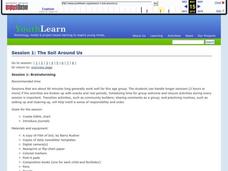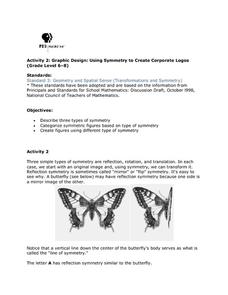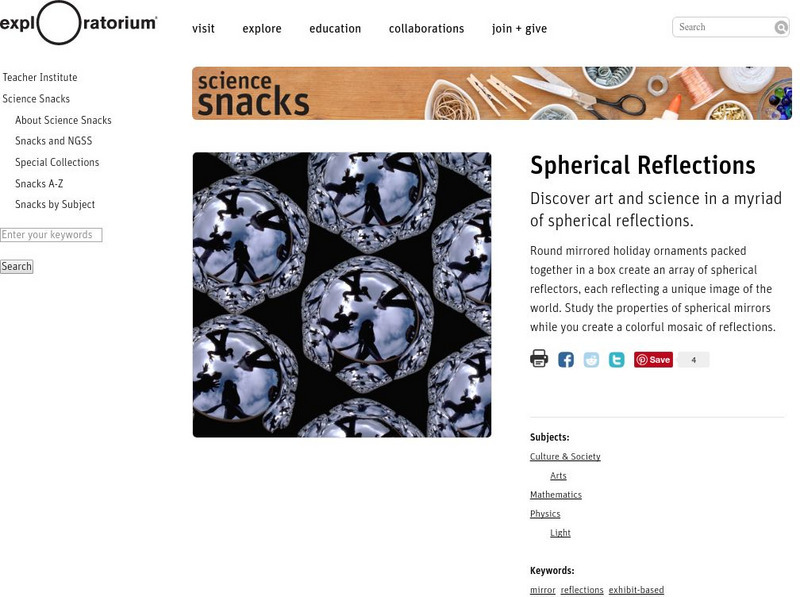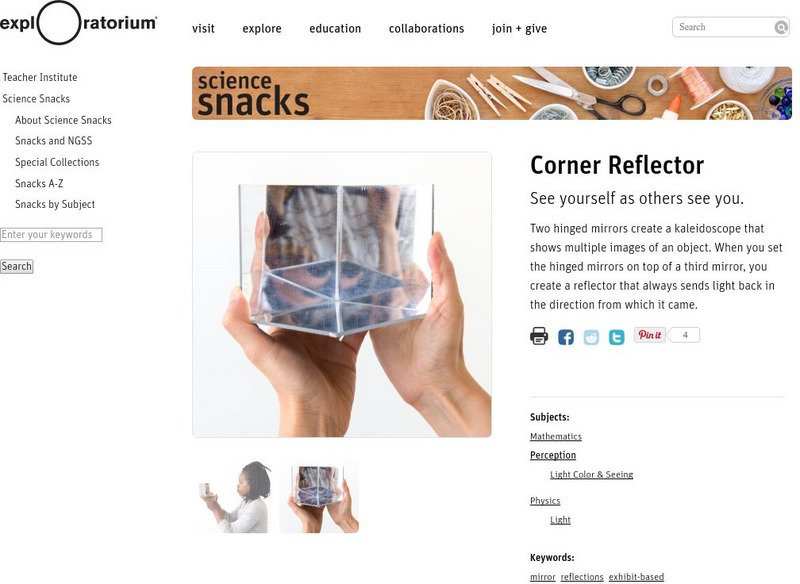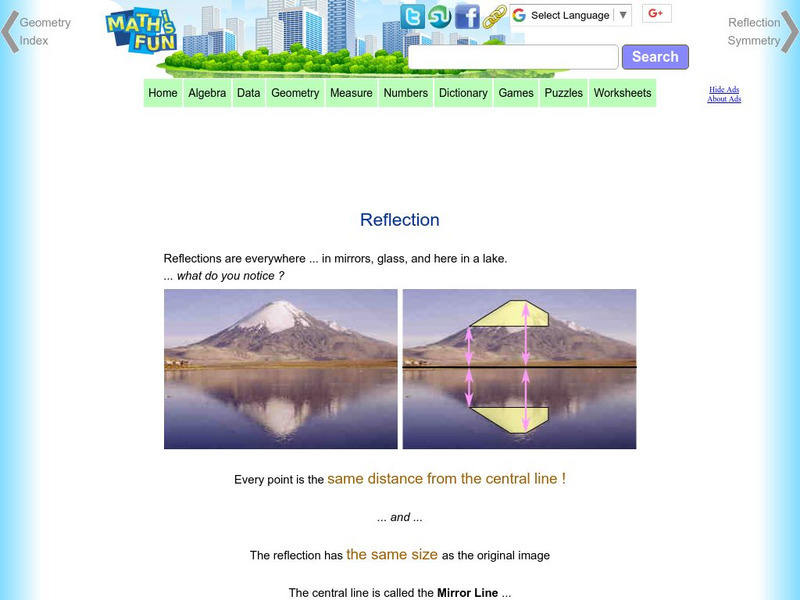Exploratorium
Touch the Spring
Concave mirrors and the images they produce are traditional topics in the physics classroom. This resource explains how to set up an investigation of them, and it provides you with the explanation of concepts.
It's About Time
Reflected Light
The lesson allows young scientists to use lasers and mirrors to study reflected light. A reading passage and homework question assess learning, while additional material introduces extension activities.
Curated OER
Reflection and Refraction
Life is only a reflection of what we allow ourselves to see. The lesson includes three experiments on light reflection, light refraction, projection, lenses, and optical systems. Each experiment builds off the ones before and...
Illustrative Mathematics
Lines of Symmetry for Quadrilaterals
Explore how lines of symmetry help define different categories of quadrilaterals. Looking at a square, rectangle, trapezoid, and parallelogram, young mathematicians discover that each shape has its own, unique symmetry. Encourage your...
Curated OER
"The Soil Around Us" Project
Young geographers collect samples of different kinds of soil to match to the soil terms in Barry Rudner's rhyming book Filet of Soil: dirt, mud, dust, soot, etc. They start a glossary for the project on index cards or large sheets...
Curated OER
Symmetry of the Addition Table
Help your class discover the commutative property of addition with this exploration of the addition table. By folding and coloring the table, a symmetry is found that directs students to an understanding of this crucial mathematical...
Exploratorium
Polarized Sunglasses
Reflected waves of light move within a plane, and because of this, polarizing materials can reduce the glare our eyes see. This resource explains how to set up a demonstration of this effect. Consider it for use in your physical science...
PBS
Using Symmetry to Create Corporate Logos
Young mathematicians investigate the use of symmetry in graphic design. After first learning about reflection, translational, and rotational symmetry, children use this new knowledge to identify symmetry in letters of the...
Exploratorium
Exploratorium: Science Snacks: Cylindrical Mirror
In this investigation, see yourself as others see you by using a cylindrical mirror instead of a flat mirror.
Exploratorium
Exploratorium: Science Snacks: Spherical Reflections
Investigate the behavior of light that is reflected off a spherical mirrored surface.
Exploratorium
Exploratorium: Science Snacks: Corner Reflector
By creating a kaleidoscope using a set of hinged mirrors students can see themselves as others do! This activity uses mirrors to create multiple images of an object.
Texas Instruments
Texas Instruments: The Closer I Get to You Ti 83
Here's a group activity your students can do to learn about rational functions. Students will use properties of reflections together with measuring tapes, mirrors, and masking tape to find a function that relates height of a reflection...
Texas Instruments
Texas Instruments: Finding the Shortest Path
Students discover the shortest distance light travels from an object to the human eye, as the light from the object reflects off a single mirror. In the process they learn about reflection in a line, congruent angles, angle bisectors,...
The Franklin Institute
The Franklin Institute Online: On Reflection
This is an activity site to learn more about reflective symmetry. In order to complete this activity you will need a mirror.
Math Is Fun
Math Is Fun: Reflection
Students learn about reflection. An activity, examples, tricks, and a definition are included.




